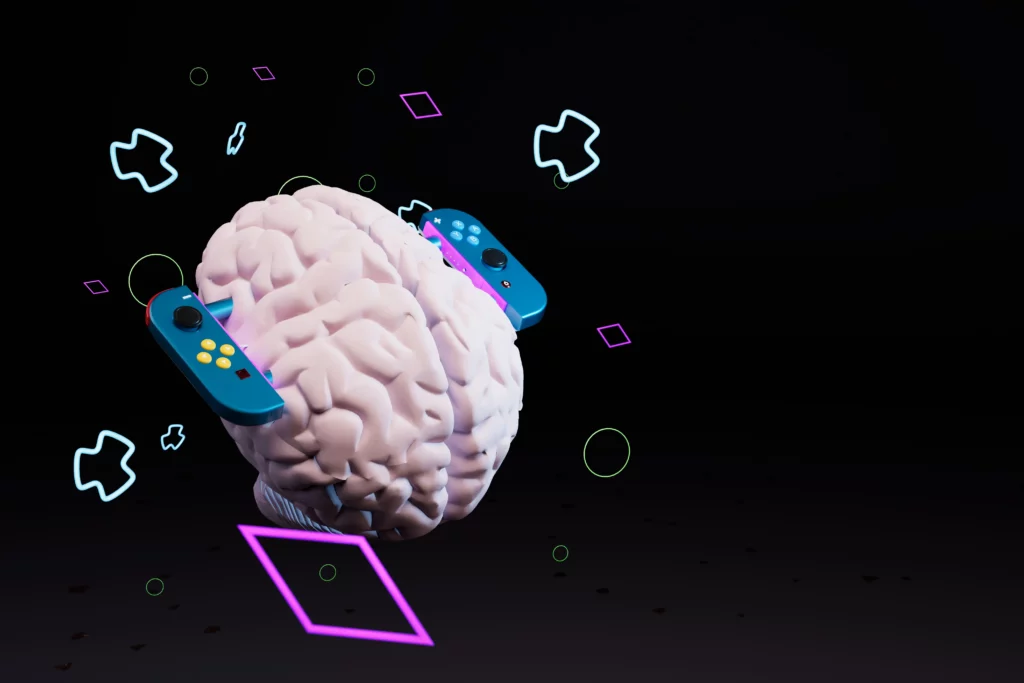The Psychology of Design: How It Influences Us
Have you ever found yourself endlessly scrolling on social media, even when you planned to only check it for a minute? Or perhaps you’ve been drawn into a mobile game for hours without realizing how much time has passed? This isn’t a coincidence—it’s the result of deliberate design choices. Designers create experiences that are engaging, sticky, and often highly influential. By understanding the principles behind these interfaces, we can better comprehend how design influences us and affects our behavior and attention. This article explores the psychological levers digital creators pull to keep us engaged.

Why We Stay: The “Hooked” Model
The digital era has brought us immense convenience and access to information. However, it has also exposed us to interfaces meticulously crafted to maximize our screen time. These digital tools aren’t neutral; they’re built to capture and hold our attention. Nir Eyal, in his book “Hooked: How to Build Habit-Forming Products,” describes a four-step model companies use to create addictive products. This cycle is a prime example of how design influences us at a subconscious level.
- The Trigger: A prompt gets you to take action. It can be an external trigger, such as a push notification, or an internal one, such as a feeling of boredom or loneliness. When you see the red notification icon on Facebook, that’s an external trigger. The feeling of wanting to connect with friends and see what they are up to is an internal trigger.
- The Action: You perform the simplest action in anticipation of a reward. For example, you open the app, scroll down a feed, or click a button—these are all easy, intuitive actions. An app’s design minimizes the effort required to perform this action, making it almost automatic.
- The Variable Reward: This is the most powerful part of the model. The reward isn’t predictable. Therefore, you don’t know what you’ll find when you scroll your feed, open a notification, or check your email. This unpredictability creates a dopamine rush, the brain’s pleasure neurotransmitter, which makes the action addictive. It’s the same principle behind slot machines. With every pull of the lever, there’s a chance of a big reward, and that possibility is what keeps us coming back for more.
- The Investment: You “invest” in the product by spending time, data, or effort. This could be posting a photo, writing a comment, or following someone. The more you invest, the more valuable the product becomes to you, and the more likely you are to return. This cycle, when well-designed, creates habits that are difficult to break.
Gamification: Turning Tasks into Games
Gamification is the application of game-design elements and principles in non-game contexts. This technique increases user engagement and encourages specific behaviors, essentially making mundane tasks feel more rewarding. This is a subtle yet powerful way design influences our daily routines.
- Points and Leaderboards: Many fitness apps, like Strava and Fitbit, use points and leaderboards to motivate users. Seeing your name climb a list of friends or a public group can be a powerful motivator to walk an extra mile or hit the gym one more time. Consequently, this social competition stimulates effort and persistence.
- Badges and Achievements: Social media platforms and language-learning apps like Duolingo use badges and “streaks” to reward consistent use. These virtual trophies provide a sense of accomplishment and encourage users to maintain their habits to avoid losing progress. For example, the fear of losing a streak is a strong motivator not to break the habit.
- Variable Rewards: The slot machine effect is a perfect example of this. When you pull down to refresh a feed on Instagram or Twitter, you don’t know what you’ll see. As a result, this unpredictability creates a dopamine rush, making the action addictive and keeping you coming back for more.
The Power of Color, Layout, and Persuasion
Colors and layouts aren’t just for aesthetics—they play a crucial role in shaping our emotional responses and guiding our actions. This is another way design influences our decisions, often without us even realizing it.
- Color Psychology: Colors evoke specific emotions and associations. Blues and greens are often used in tech and banking apps to convey trust and reliability. In contrast, designers frequently use red for “call to action” buttons to create a sense of urgency. The red notification bubble on apps like Facebook isn’t a random choice; it’s a color that grabs our attention and prompts us to act.
- Layout and Flow: Websites and apps have a specific flow. They guide our eyes to certain elements, making it easier for us to find what designers want us to see. Large, eye-catching buttons, strategically placed advertisements, and minimalist layouts all work together to streamline our experience while subtly influencing our decisions. The concept of “above the fold” is also critical—designers place the most important information where users can see it without scrolling, ensuring they get the key message immediately.
Designers also employ established persuasion principles to make us act quickly.
- Countdown Timers: On e-commerce websites, you frequently see countdown timers for limited-time offers. “This offer ends in 10 minutes!” This creates a sense of urgency, making you feel you must act now to avoid missing an opportunity.
- Social Proof: Seeing phrases like “30 people are viewing this item right now” or “500 units sold” creates social proof. We feel that if so many other people are interested, the product must be good and worth buying. Consequently, this makes us follow the crowd, a natural psychological tendency.
The Psychology of “Flow” and The Dangers of Addictive Design
Ultimately, these design elements aim to achieve a state of “flow” for the user. Psychologist Mihaly Csikszentmihalyi coined this term, describing it as a state of complete immersion in an activity. When we’re in flow, we lose track of time, and our attention is fully concentrated on the task at hand. This is the ultimate goal of effective, and sometimes manipulative, design. App and website designers try to induce this feeling by creating a seamless and engaging experience. They minimize distractions, provide clear and immediate feedback, and present content that is just challenging enough to be interesting but not so difficult that it causes frustration. The goal is for the experience to be so smooth and rewarding that you simply can’t stop.
While these design principles can be used to create positive experiences (such as an app that genuinely helps you learn a new language), they can also be used manipulatively. The addictive design that influences our engagement with certain platforms can lead to issues like procrastination, decreased productivity, and even anxiety. The fear of missing out (FOMO) and the constant need for validation through likes and comments can take a toll on our mental well-being. Therefore, awareness of these design mechanisms is crucial. When we understand how design influences us, we can make more conscious decisions about how and for how long we interact with technology. We can question why we feel the need to scroll through a news feed or why we are drawn to a particular button.
The Role of the Ethical Designer
The conversation about how design affects us has led to a growing discussion about ethics in design. Many designers now question whether their creations truly serve users or simply exploit their psychological vulnerabilities to generate profits. The “human-centered design” movement focuses on creating products that respect a user’s time and attention rather than just trying to maximize them. This includes features such as:
- “Stop” Design: Notifications that let the user set periods of time to go offline.
- More Human Feedback: Instead of an anxiety-inducing red bubble, using gentler, less urgent feedback.
- Clear and Transparent Choices: Letting the user understand why a certain feature is being used and how they can control it.
In summary, technology is a powerful force in our lives, and its design has a profound impact on how we think, feel, and act. By becoming more aware of the psychological principles that shape our digital interactions, we can empower ourselves to use technology more intentionally and less passively. The key is to recognize that design influences us. From there, we can reclaim control over our time and attention.
